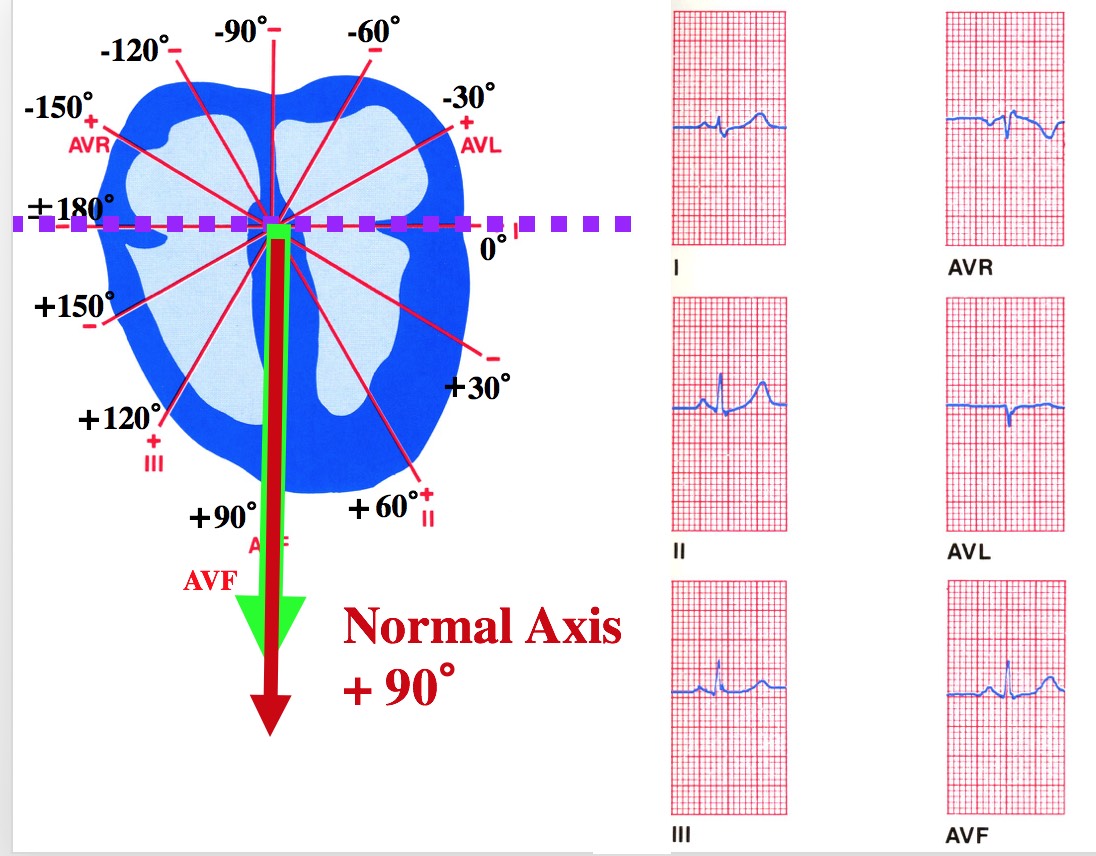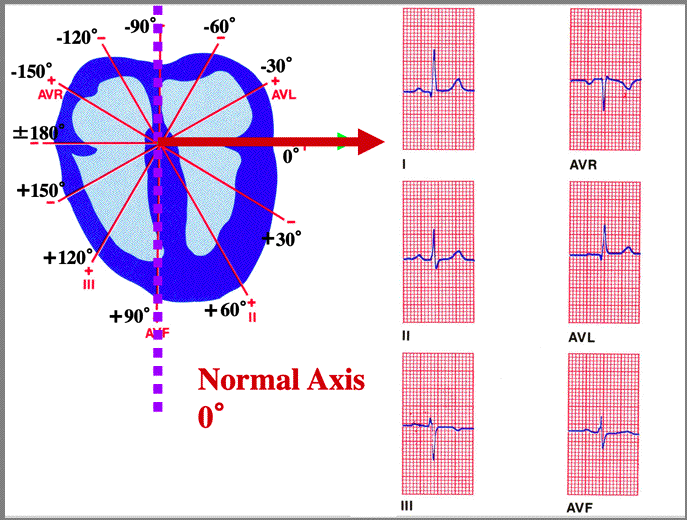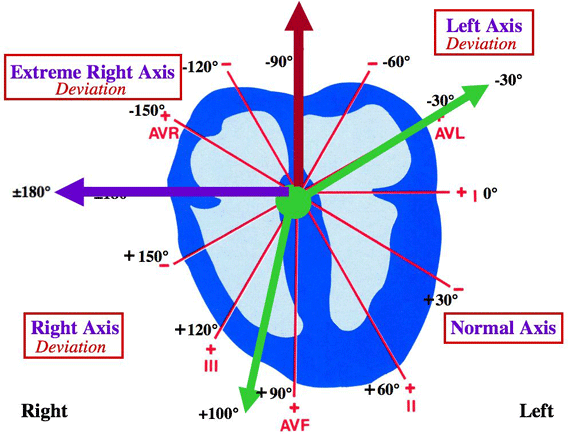|
|
| Class, Below is an example how to determine the QRS axis and degrees when Lead I is the Biphasic (close to isoelectic) Lead |
 |
| STEP 1: Is the QRS in Lead I mostly positive or negative? LEAD I is the Biphasic Lead (closest to isoelectric) |
| STEP 2: Is the QRS in AVF mostly positive or negative? POSITIVE |
| STEP 3: Which lead is the biphasic lead closest to isoelectric. Lead I |
| REMINDER: THE MEAN QRS AXIS IS ALWAYS PERPENTICULAR TO THE BIPHASIC LEAD. AND, STEP 1 AND STEP 2 HAVE IDENTIFIED THE QUADRANT OF THE MEAN QRS |
| STEP 4: Determine QRS Axis and degrees? Since Lead I is the biphasic lead and AVF is positive, the classification is Normal Axis +90 Degrees |
 |
| Class, Below is an example how to determine the QRS axis and degrees when AVF is the Biphasic (close to isoelectic) Lead |
 |
| STEP 1: Is the QRS in Lead I mostly positive or negative? LEAD I is mostly positive |
| STEP 2: Is the QRS in AVF mostly positive or negative? AVF is the Biphasic lead closest to isoelectric |
| STEP 3: Which lead is the biphasic lead closest to isoelectric. AVF |
| REMINDER: THE MEAN QRS AXIS IS ALWAYS PERPENTICULAR TO THE BIPHASIC LEAD. AND, STEP 1 AND STEP 2 HAVE IDENTIFIED THE QUADRANT OF THE MEAN QRS |
| STEP 4: Determine QRS Axis and degrees? Since AVF is the biphasic lead and Lead I is positive, the classification is Normal Axis 0 Degrees |
 |
Review: Mean QRS Axis Classification Quadrants
|
 |
| Normal Axis: from -30 degrees to +100 degrees |
| Right Axis Deviation: from +100 degrees to ±180 degrees |
| Extreme Right Axis Deviation: from ±180 degrees to -90 degrees |
| Left Axis Deviation: from -90 degrees to -30 degrees |
 |
|
|


